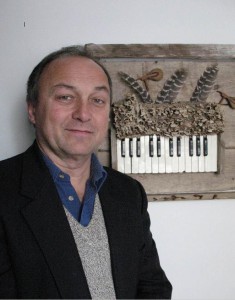Music has been known for its soothing and calming effects as a medical property. The intersection between music and health care has once again been applied in healing therapy for premature babies. This recent multisided research was conducted in 11 hospitals across the country and involved the role of Paul Nolan, the director of music therapy programs at Drexel’s College of Nursing and Health Professions.
The music therapy program, established in 1975, is part of the Creative Arts Therapies Department, which includes art, dance and movement, drama, poetry and more. It integrates arts and health sciences.
Nolan’s study seeks to use sounds to assist the development of premature babies, who are defined as babies born so young that they have incompletely formed organs or cannot survive on their own. The main purpose of this therapy is to regulate breathing, increase blood oxygen content, and maintain a stable heart rate at the neonatal intensive care units.
“With babies, when they’re born, they already have the capability to understand a lot about music,” Nolan said.
Regarding this congenital characteristic during the third trimester in the womb, therapists use three main specialized instruments: “ocean disc,” “gato box” and singing. These mechanisms provide premature babies with an audio environment similar to that of the mother’s belly.
The “ocean disc” (or “ocean drum”) contains pebblelike balls inside it, which is similar to a rain stick but sounds more like the ocean. This instrument creates a sound similar to when people softly pronounce “shhhh,” bearing a resemblance to the sound of an amniotic sac inside a pregnant woman’s uterus. This helps provide a soothing and familiar environment for the infant.
“Gato box,” according to Nolan, is “a little wooden box which is a percussion instrument that has four different pitches when you hit it.” because the baby cannot stop hearing, the therapist would gradually hit the pitches back and forth in a rhythm that matches the infant’s heartbeat and then taper the tempo in order to reduce the heart rate and calm the baby down.
Based on the clamps attached to the baby’s feet, the music therapist can watch and pick up heartbeat, respiration (how fast the tempo is), and the amount of oxygen in the blood to make sure that the baby breathes in a relaxing way.
Another method used is singing. “The singing has a lot of repetitions. It’s pretty quiet, and there’s a lot of decent contours with breathy sounds, the sound of soothing,” Nolan said.
Babies also learn contour, the pattern of changes in pitch over time. They know how to interpret the contour’s sounds to feel responses. Mothers use their voice in a musical kind of way to talk to the baby in what’s called “motherese” or “infantese.” Babies are born to have some musical sensitivity. “The baby can’t understand words. The babies understand the inflections of voice,” Nolan said. The reason for doing this is to enhance communication between the mother and baby for bonding purposes.
He continued, “Sometimes parents are very nervous when they have children [and a] baby in the NICU. And we try to help the parents relax by using music with them and singing with them to the baby. And it doesn’t have to be special songs. It can be songs that the parents like. [For instance,] songs in the family, songs of kin. Sometimes they play songs, sometimes they sing songs, but the infant knows that it’s the mommy better than the therapist.”
By combining the usage of those three instruments, Nolan said, “A therapist is doing some similar things but looking for different outcomes. … And the reason we do that is because playing and singing has a lot physiological effects on everybody.”
Nolan mentioned the role of interactive communication between the mother or therapist and the baby, using sedation methods and stimulation. In the natural environment, the baby can directly learn from the mother through smiles, eye contact or imitation, and it habituates to it.
While in the NICU, there is very little space, and the main noises are machines beeping and nurses talking. Therefore, the music therapist needs to watch for any signs of engagement or disengagement, such as sucking as the sign of pleasure response, making eye contact, frowning, getting fussy, etc., to adjust the stimulations properly.
The longer an infant is in the NICU, the more likely it is to lack full brain development. This may be prevented by having regular contact with the mother or the caregiver.
Babies can also recognize those signals with the use of the machines. Their heart rate may go up a little but remain stable. Even breathing with a high blood oxygen content shows engagement in learning something through sounds.
When the baby is off the machine but still needs additional stimulations, the therapist can tap rhythmically on the baby, say the baby’s name, or play with the baby to enhance hearing ability. “If you don’t have these kinds of stimulations to the baby, when the baby goes home, it really sets back,” Nolan said.
Nolan said he and his team also work with parents on a regular basis to educate them on how to help the infants at home.
This research has been published in the journal Pediatrics. Nolan conducted the study along with Carrie Davoli, his former graduate student, and Joanne Loewy, an adjunct instructor and the lead researcher at Beth Israel Medical Centers in New York, who trained Nolan and Davoli from time to time.



